
Skinks are lizards belonging to the family Scincidae, a family in the infraorder Scincomorpha. With more than 1,500 described species across 100 different taxonomic genera, the family Scincidae is one of the most diverse families of lizards. Skinks are characterized by their smaller legs in comparison to typical lizards and are found in different habitats except arctic and subarctic regions.
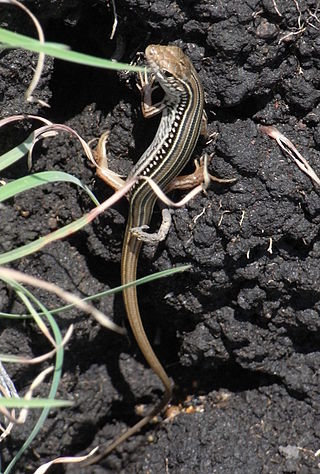
Ctenotus is a genus of skinks, lizards in the family Scincidae. The genus is endemic to Australia. The genus Ctenotus belongs to a clade in the Sphenomorphus group which contains such genera as Anomalopus and the close relatives Eulamprus and Gnypetoscincus.
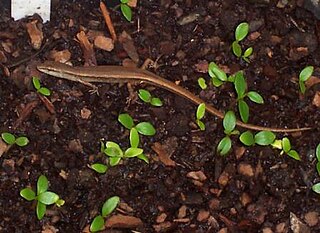
Lampropholis delicata, the delicate skink, dark-flecked garden sun skink, garden skink, delicate garden skink, rainbow skink or plague skink, or the metallic skink is native to Australia and invasive in New Zealand and Hawaii where it is commonly found in gardens. The species is known for their color dimorphism between males and females; striped morphs and non-striped morphs exist in this species, however the stripe is less pronounced in males. This species' diet consists of a wide range of prey, such as spiders, bees, larvae, and termites. Mating occurs in the late summer and generally one clutch of 2 to 4 eggs are laid per year by each female.

Morethia boulengeri is a species of lizard in the family Scincidae. The species is endemic to Australia.

Eulamprus quoyii, more commonly known as the eastern water skink, eastern water-skink, or golden water skink, is a viviparous species of diurnal skink. Eulamprus quoyii belongs to the family Scincidae and is considered a common garden animal in Australia. The skink is endemic to Australia and found only along the east coast of the country. It makes its home in creekside habitats along the east coast of Australia and in urban garden areas with high amounts of moisture. The species can be identified by the twin, long yellow stripes that run along its body from the top of the eye, as well as by several more specific character derived states. The pale yellow dorsolateral stripes are most likely where its common name, the golden water skink, is derived. Like other ectotherms, the skink can often be seen basking in the sun on rocky outcroppings in order to regulate its body temperature. Its diet mainly consists of both aquatic and terrestrial insects, tadpoles and small amounts of plant matter. The skink both hunts for food and scavenges when necessary and is considered an opportunistic feeder. It is prey to larger lizards, snakes, cats and birds and so will often be seen moving quickly into hiding when other organisms are present.

Saiphos equalis, commonly known as the yellow-bellied three-toed skink or simply three-toed skink, is a species of burrowing skink found in eastern Australia. It is the only species classified under the genus Saiphos.

The eastern striped skink is a species of skink found in a wide variety of habitats around Australia. They are long-tailed, fast moving skinks that are quite large, growing to a maximum length of about 30 cm. This skink is mostly brown with a white-edged black stripe running down the length of its back and tail with broad brown stripes along the side of the body with rows of white spots. The sides become lighter, turning into an off-white colour towards the underside of the skink, running from the groin to the chin. The striped skink is similar in appearance to the spotted-back skink with the main identifying difference being the solid stripe running down the back of C. robustus whereas C. uber orientalis has a row of dots.
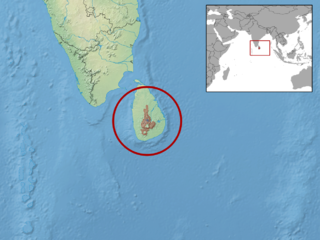
Lankascincus deignani, commonly known as Deignan's tree skink and the Deignan tree skink, is a species of lizard in the family Scincidae. The species is endemic to the island of Sri Lanka.

Ctenotus strauchii, also known commonly as the eastern barred wedge-snout ctenotus or Strauch's ctenotus, is a small species of lizard in the family Scincidae. The species is endemic to Australia and is found throughout semi-arid and arid regions in most of Australia's mainland states except Western Australia, although one record does exist for Western Australia in 1975.
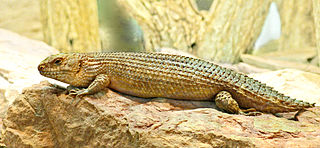
Egernia stokesii is a gregarious species of lizard of the Scincidae family. This diurnal species is endemic to Australia, and is also known as the Gidgee skink, spiny-tailed skink, Stokes's skink and Stokes's egernia. The species forms stable, long-term social aggregations, much like the social groups seen in mammalian and avian species. This characteristic is rarely found in the Squamata order, but is widespread within the Australian subfamily of Egerniinae skinks. Populations of E. stokesii are widely distributed, but fragmented, and occur in semi-arid environments. There are three recognised subspecies. The conservation status for the species is listed as least concern, however, one subspecies is listed as endangered.

The desert egernia, unadorned desert-skink or desert skink is a species of skink, a lizard in the family Scincidae. The desert egernia is endemic to the continent of Australia, and is widespread, with populations recorded in all mainland states and territories except the Australian Capital Territory. The desert egernia is found in dry, desert areas with deep, uncompacted sandy/loamy soils and little significant vegetation cover.
Ctenotus atlas, the southern Mallee ctenotus, is a medium sized lizard in the family scincidae (skink) found in the central and southern interior regions of South Australia and Western Australia; the Mallee regions of NSW and Victoria, in Australia.
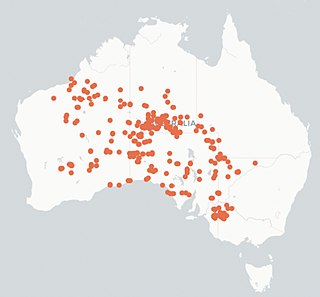
Ctenotus brooksi, also known commonly as Brooks' wedge-snouted ctenotus, the wedgesnout ctenotus, and the sandhill ctenotus, is a species of skink, a lizard in the family Scincidae. The species is endemic to Australia and found in semi-arid regions.

Ctenotus inornatus, the bar-shouldered ctenotus, is a species of skink found in the Northern Territory, Queensland, Victoria, New South Wales, and Western Australia.

Ctenotus leonhardii, known by the common names Leonhardi's ctenotus, Leonhardi's skink or common desert ctenotus, is a species of skink found in a range of arid and semi-arid regions throughout mainland Australia. The species was named after German anthropologist Moritz von Leonhardi in 1919 and belongs to the genus Ctenotus, one of the largest genera of lizards in Australia.
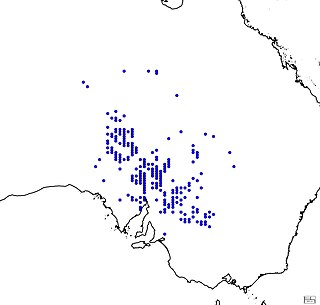
Ctenotus olympicus, the olympic ctenotus, spotted ctenotus or saltbush ctenotus, is a species of skink endemic to the arid shrublands of central and southern Australia.

The pale-rumped ctenotus or regal striped skink is a medium-sized species of skink with an arid distribution restricted to the Australian Mainland, which belongs to the largest group of reptiles in Australia, Ctentotus.

The barred wedge-snout ctenotus is a species of skink found in Australia.[2]
Ctenotus spaldingi is a diurnal terrestrial skink (Scincidae) species of lizard, commonly known as the straight-browed ctenotus or Spalding's ctenotus. Native to Australia the species is found in the northern areas of Australia, along the east coast, in the north and east of South Australia and throughout Victoria and in southern Papua New Guinea. Their conservation status is of least concern classified by the IUCN. Individuals can be up to 30cm long from the snout to tail or 10cm long from the snout to vent (SVL). They typically inhabit grasslands and low vegetation in savannah woodlands in coastal dune areas, monsoon scrub and woodland commonly found around rock outcrops and when disturbed will hide in shallow burrows or amongst ground litter.

Ctenotus helenae, also known commonly as the clay-soil ctenotus, is a species of skink, a lizard in the family Scincidae. The species is endemic to Australia.


















